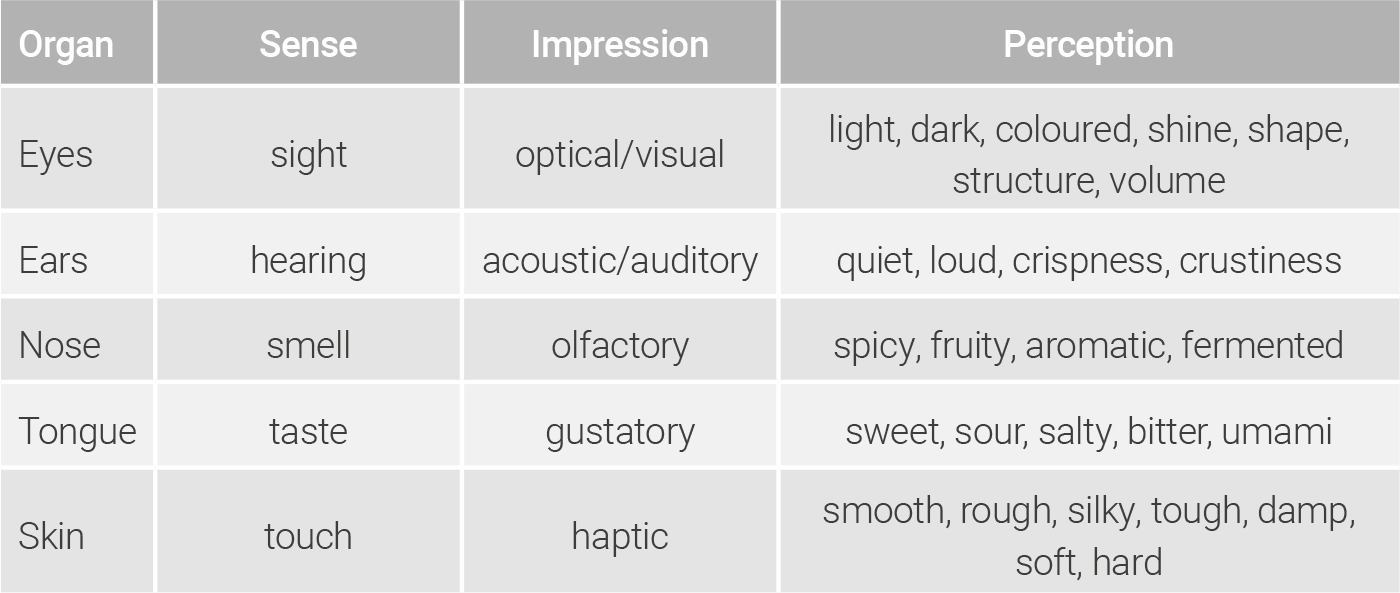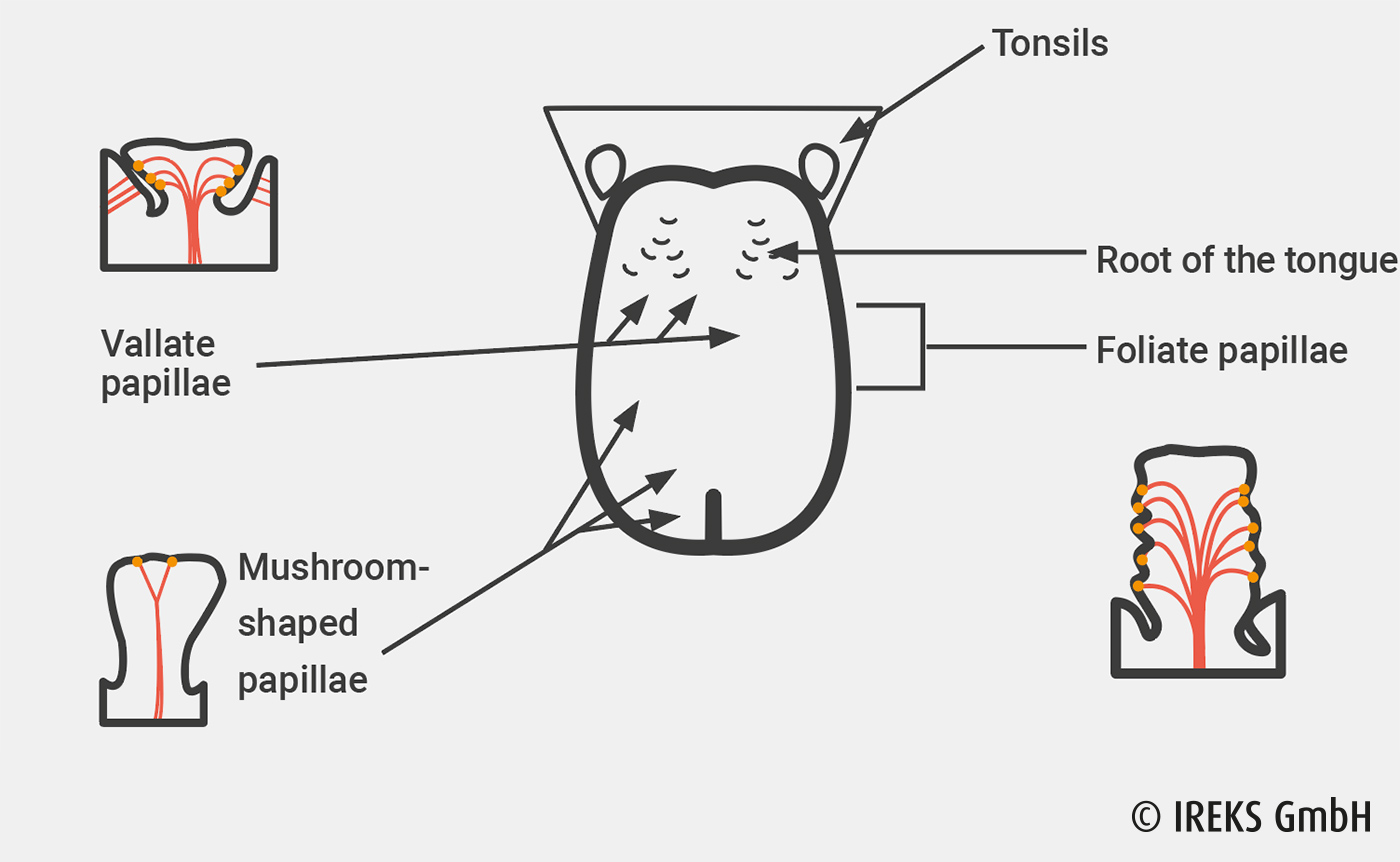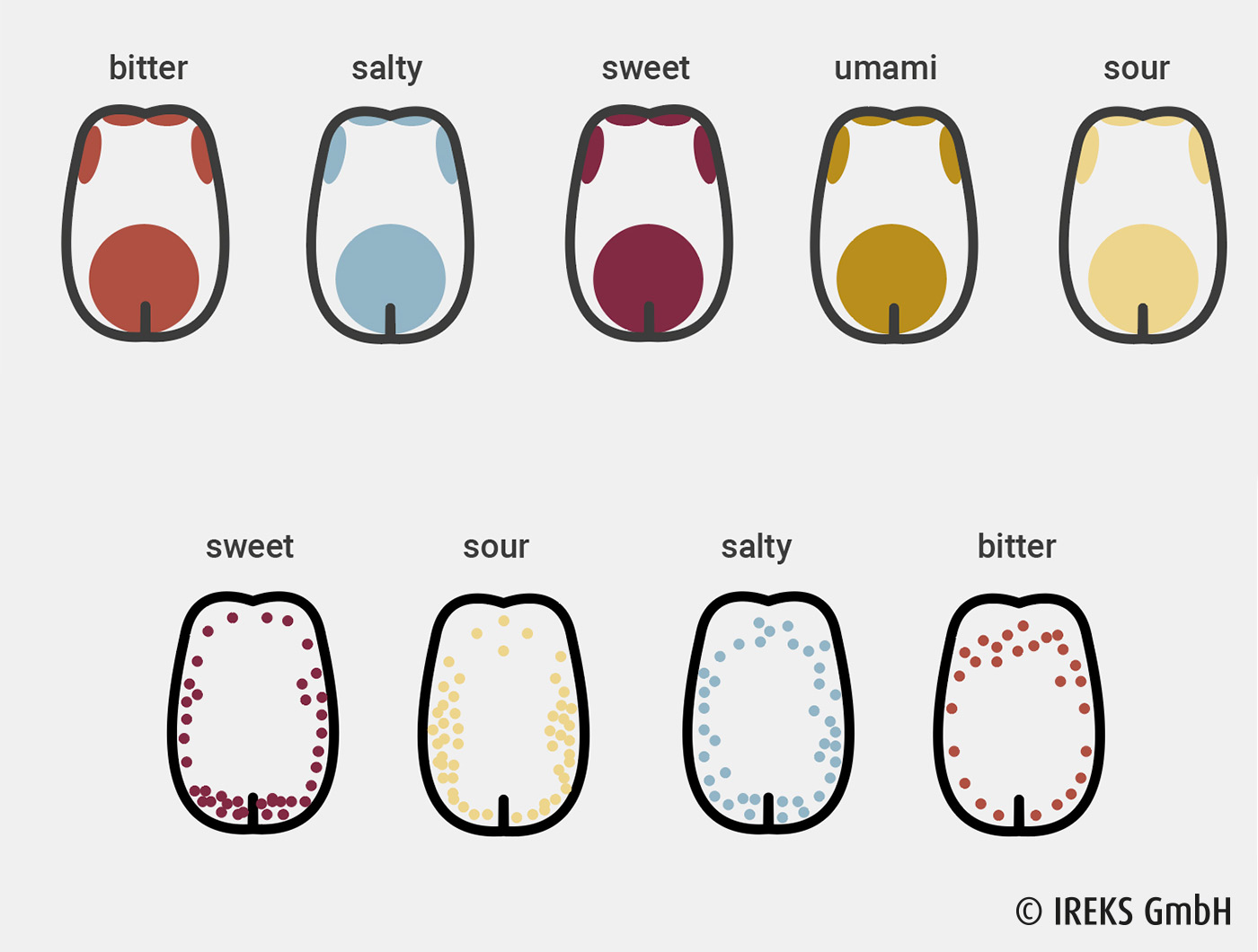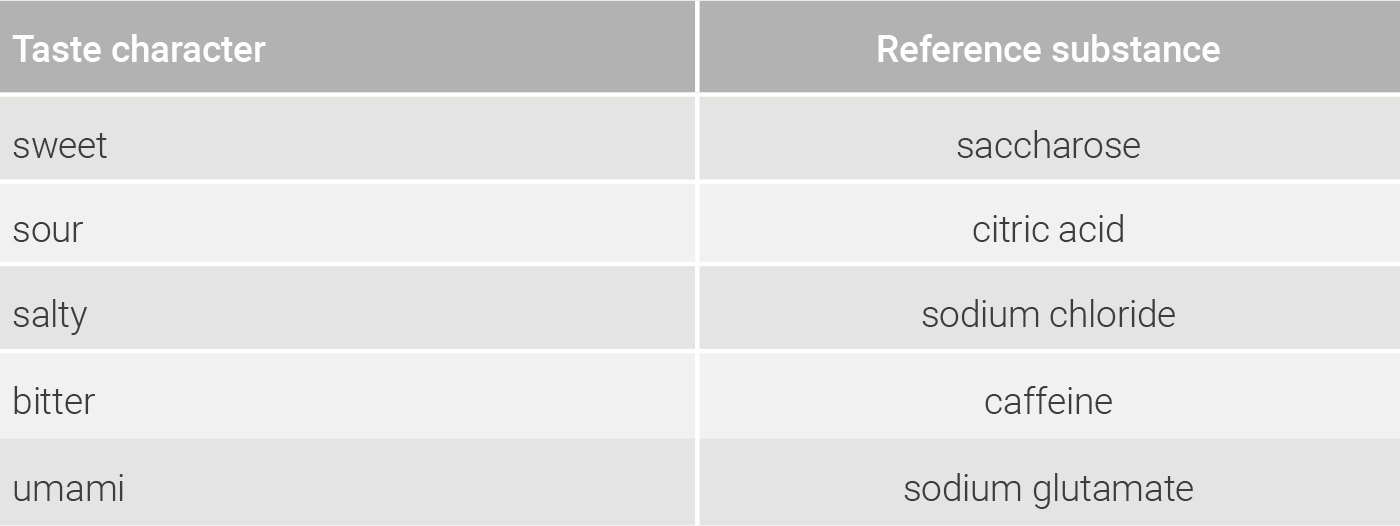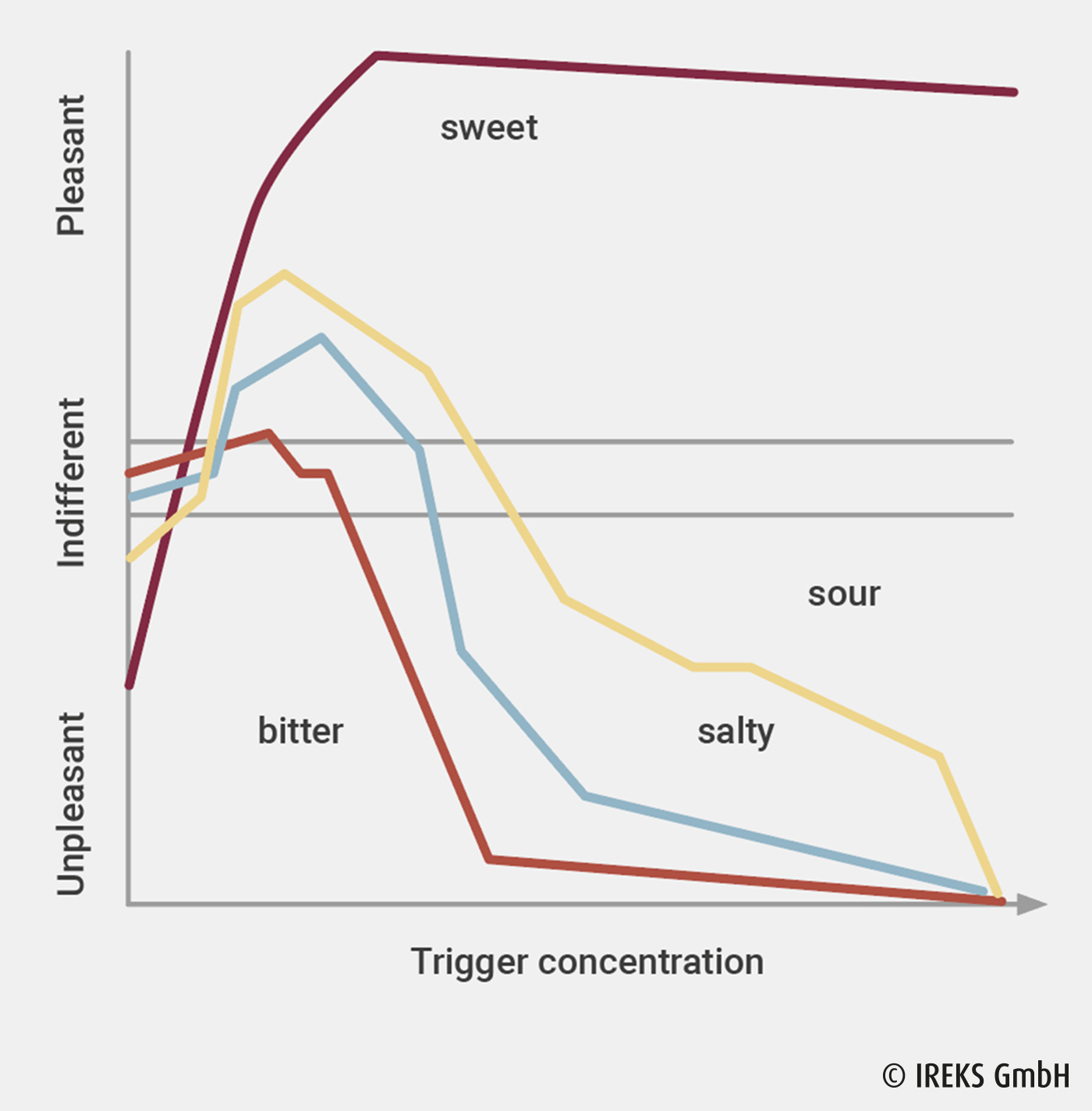The impressions of the senses of a human being are divided between the different organs of eyes, ears, nose, tongue and skin. Each organ has an important role in the perception of the impressions of the senses. Subsequently, the impressions won are processed in the brain to gain reactions and reflexes, e.g. after biting into an over-riped fruit, a reflex rejection of the food will probably follow.
Sensory analysis is the evaluation of properties of the impressions won by the sensory organs. Table 15.1 contains an overview of the individual organs, how the impression is won and which properties are perceived in the brain.
Types of taste
Different taste characteristics can be perceived by the tongue, from sweet, sour and salty to bitter and umami.
Umami comes from Japanese and translated means “pleasant taste”, ”tasty” or “delicious”. This taste direction describes the taste of salts of glutamic acid, which, among other things, can be used as a flavour enhancer.
Various types of papillae are found on the tongue. Here, the small fungiform papillae cover the whole tongue. At the root of the tongue, a V-shaped formation of eight to twelve relatively large vallate papillae is found. The so-called foliate papillae with tightly grouped folds behind one another are located at the posterior tongue edge in front of the vallate papillae V.
In the papillae are the taste buds, which, in turn, are composed of individual sensory cells. In illustration 15.1, the different types of papillae on the tongue are shown.
The tongue maps in illustration 15.2 from Chandrashekar and Schmidt make clear that the basic types of taste can be perceived all over the tongue and not, as misleadingly assumed, in only a limited region of the tongue.
In table 15.2, the basic types of taste are listed with the corresponding reference substance. The relevant reference substances are common substances which are already very familiar to the body and which can be categorized easily.
In illustration 15.3, the trigger concentration of four basic types of taste are shown. In the case of a sweet character, only a slight fall in the pleasant perception takes place with an increasing concentration. In contrast, sour, salty and bitter are only perceived as pleasant in a low concentration and lose greatly in positive perception in an increasing concentration. The statement cannot be transferred to the food intake of humans in general, as this is very complex in regard to composition. Nevertheless, sweetness has a high preference when consumed.

